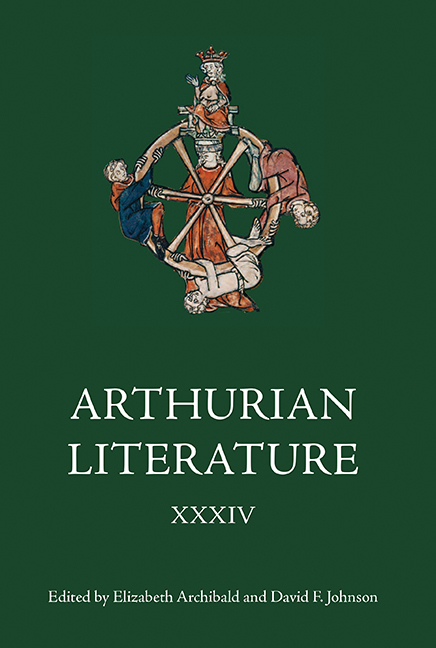Book contents
- Frontmatter
- Contents
- List of Illustrations
- General Editors’ Foreword
- List of Contributors
- I Illusory Ends in Chrétien de Troyes’ Erec et Enide
- II Who is the Traitor at the Beginning of Sir Gawain and the Green Knight?
- III Sir Gawain's Death and Prophecy in Malory's Morte Darthur
- IV Late Medieval Irish Kingship, Egerton 1782, and the Irish Arthurian Romance Eachtra an Mhadra Mhaoil (‘The Story of the Crop-Eared Dog’)
- V ‘Which I have beholden with most curiouse eyes’: The Lead Cross from Glastonbury abbey
- VI The Arundel Coronatio Arthuri: A Middle English Sword in the Stone Story from London, College of Arms MS Arundel 58
- Arundel Coronacio Arthuri
- Appendix I Linguistic Profile For Aca
- Appendix II Select Glossary
- Contents of Previous Volumes
II - Who is the Traitor at the Beginning of Sir Gawain and the Green Knight?
Published online by Cambridge University Press: 17 July 2019
- Frontmatter
- Contents
- List of Illustrations
- General Editors’ Foreword
- List of Contributors
- I Illusory Ends in Chrétien de Troyes’ Erec et Enide
- II Who is the Traitor at the Beginning of Sir Gawain and the Green Knight?
- III Sir Gawain's Death and Prophecy in Malory's Morte Darthur
- IV Late Medieval Irish Kingship, Egerton 1782, and the Irish Arthurian Romance Eachtra an Mhadra Mhaoil (‘The Story of the Crop-Eared Dog’)
- V ‘Which I have beholden with most curiouse eyes’: The Lead Cross from Glastonbury abbey
- VI The Arundel Coronatio Arthuri: A Middle English Sword in the Stone Story from London, College of Arms MS Arundel 58
- Arundel Coronacio Arthuri
- Appendix I Linguistic Profile For Aca
- Appendix II Select Glossary
- Contents of Previous Volumes
Summary
SITHEN the sege and the assaut was sesed at Troye, The burgh brittened and brent to brondes and askes, The tulk that the trammes of tresoun there wroghte Was tried for his trecherye, the truest on erthe. (Sir Gawain and the Green Knight, lines 1–4)
Sir Gawain and the Green Knight begins with a catastrophe: the destruction of a city so terrifyingly complete that there is nothing left but charred wood and ashes (‘brondes and askes’). It is in the context of this allusion to the ‘sege and the assaut’ of Troy that the poet then refers to a certain knight (a ‘tulk’), who he says committed an act of treason somehow so profound or archetypical as to be ‘the truest [treachery] on erthe’. The implication seems to be that the knight's treason is in some important way the cause of the disaster. But who is this traitor? How exactly does his treason relate to the spectacular destruction of the city? And how is either Troy's fate or the traitor's role in it relevant to themes of the story that the Gawain-poet goes on to tell?
These are questions that have troubled scholarship on Sir Gawain and the Green Knight ever since it was first printed by Sir Frederic Madden in 1839. Indeed, the interpretation of the problem that Madden offered in this editio princeps of the poem seems to have largely determined the direction of the debate ever since. Most modern editors of the poem accept Madden's identification of the traitor as Aeneas, although some prefer the alternative candidate championed by Sir Israel Gollancz in his edition of 1940: i.e. Antenor, who in several late-classical and medieval versions of the story conspires with Aeneas (and others) in acts of treachery against the city. In either case, commentators often acknowledge at least a degree of doubt or uncertainty, but they virtually always conclude in the end that either Madden or Gollancz must have been right. In this essay, I argue that there is room for a fresh approach to the problem, and that such an approach might be illuminating for an understanding of the poem as a whole.
- Type
- Chapter
- Information
- Arthurian Literature , pp. 22 - 51Publisher: Boydell & BrewerPrint publication year: 2018



